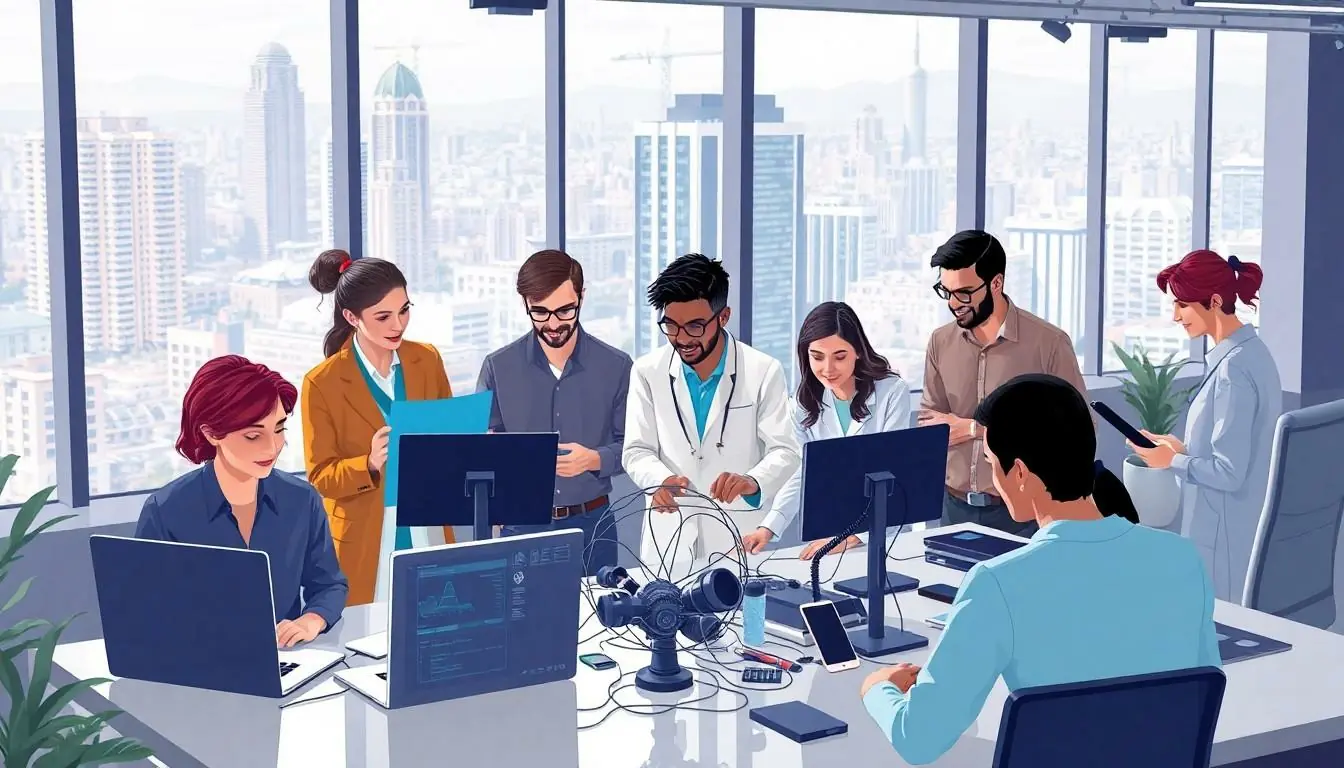In the bustling world of artificial intelligence, names like ChatGPT and OpenAI pop up like confetti at a birthday party. But wait—are they just two sides of the same coin, or is there more to this dynamic duo? If you’ve ever found yourself scratching your head over these terms, you’re not alone.
Table of Contents
ToggleUnderstanding ChatGPT
ChatGPT serves as a popular conversational AI model developed by OpenAI. It focuses on generating human-like text based on prompts provided by users.
What Is ChatGPT?
ChatGPT is an AI language model designed to assist users in generating natural language text. Created by OpenAI, it utilizes deep learning techniques. This model processes vast amounts of data to understand context and meaning. Users engage with it in diverse applications, such as writing, tutoring, and customer service. Its capabilities extend across multiple languages, making it accessible to a global audience.
Key Features of ChatGPT
ChatGPT boasts several important features that enhance user experience. First, it provides contextual understanding, allowing it to respond accurately to queries. Second, it generates coherent text across various subjects, facilitating versatile applications. Third, it adapts to user style, creating personalized interactions. Moreover, ChatGPT supports continuous learning, refining its responses based on user feedback. These features contribute to its effectiveness in delivering engaging and informative conversations.
Exploring OpenAI

OpenAI plays a pivotal role in advancing artificial intelligence technologies. This organization conducts extensive research to develop AI that benefits humanity.
Overview of OpenAI
OpenAI, founded in December 2015, aims to ensure that artificial general intelligence benefits all of humanity. Its team consists of prominent researchers and engineers dedicated to AI safety and ethics. The company focuses on developing safe and beneficial AI models that align with human values. With a commitment to transparency, OpenAI frequently shares research findings and models with the public, promoting collaboration.
Major Contributions of OpenAI
OpenAI has made significant strides in AI development and research. The GPT series of language models showcases its innovation in natural language processing. ChatGPT serves as a notable application, generating human-like responses that enhance user interaction. Additionally, OpenAI’s DALL-E model revolutionizes image generation by creating visual content from textual descriptions. The organization also actively engages the community through initiatives like the OpenAI API, empowering developers to integrate AI into various applications.
Comparing ChatGPT and OpenAI
ChatGPT and OpenAI share a significant connection within the realm of artificial intelligence. ChatGPT acts as a product of OpenAI, showcasing the latter’s innovative approach to AI technology. OpenAI’s mission centers on advancing AI while ensuring its alignment with human values.
Relationship Between ChatGPT and OpenAI
OpenAI developed ChatGPT as part of its broader strategy to create accessible and beneficial AI solutions. Researchers and engineers at OpenAI built ChatGPT using deep learning techniques, which enables it to generate human-like interactions. ChatGPT serves not only as a conversational agent but also as a prime example of OpenAI’s commitment to advancing AI capabilities. Through ChatGPT, users engage with one of OpenAI’s most prominent models, illustrating the organization’s focus on democratizing AI.
Distinctions Between the Two
While ChatGPT represents a specific application, OpenAI encompasses a wider organization dedicated to multiple AI research projects. OpenAI develops various models, including DALL-E for image generation and other iterations of the GPT series. ChatGPT functions as a tool for users, whereas OpenAI’s role involves research, development, and ethical considerations surrounding AI technologies. Each plays an essential role in the AI landscape, yet their scopes and functions differ significantly.
Implications for Users
Users experience distinct differences when engaging with ChatGPT and OpenAI. Understanding these differences enhances their interactions with AI technologies.
How This Affects User Experience
User experience varies significantly based on the platform. ChatGPT offers conversational capabilities that allow for engaging dialogues tailored to individual prompts. Its adaptive nature means user feedback directly influences future interactions, resulting in more personalized conversations. OpenAI’s commitment to ethical AI shapes how AI models like ChatGPT learn and improve over time, ensuring users engage with safer and more reliable technology. Accessibility also plays a critical role, as ChatGPT functions in multiple languages and can be accessed from various applications.
Future Developments
Future advancements will likely expand the capabilities of both ChatGPT and OpenAI initiatives. Continuous improvements in AI technology suggest enhancements in ChatGPT’s understanding of context and user intentions. Moreover, OpenAI’s focus on research and ethics ensures that future models prioritize user safety and align with human values. The integration of improved algorithms may lead to more seamless interactions, while ongoing community feedback will guide these developments. As AI evolves, users can expect innovative features that enhance usability and engagement across various platforms.
Understanding the relationship between ChatGPT and OpenAI clarifies their distinct roles in the AI landscape. ChatGPT stands out as a powerful conversational tool designed for user interaction while OpenAI serves as the innovative organization behind its development. This synergy not only enhances user experience but also ensures that advancements in AI align with ethical standards and safety considerations. As both continue to evolve, the future holds exciting possibilities for improved interactions and groundbreaking applications, benefiting users and the broader community alike.








